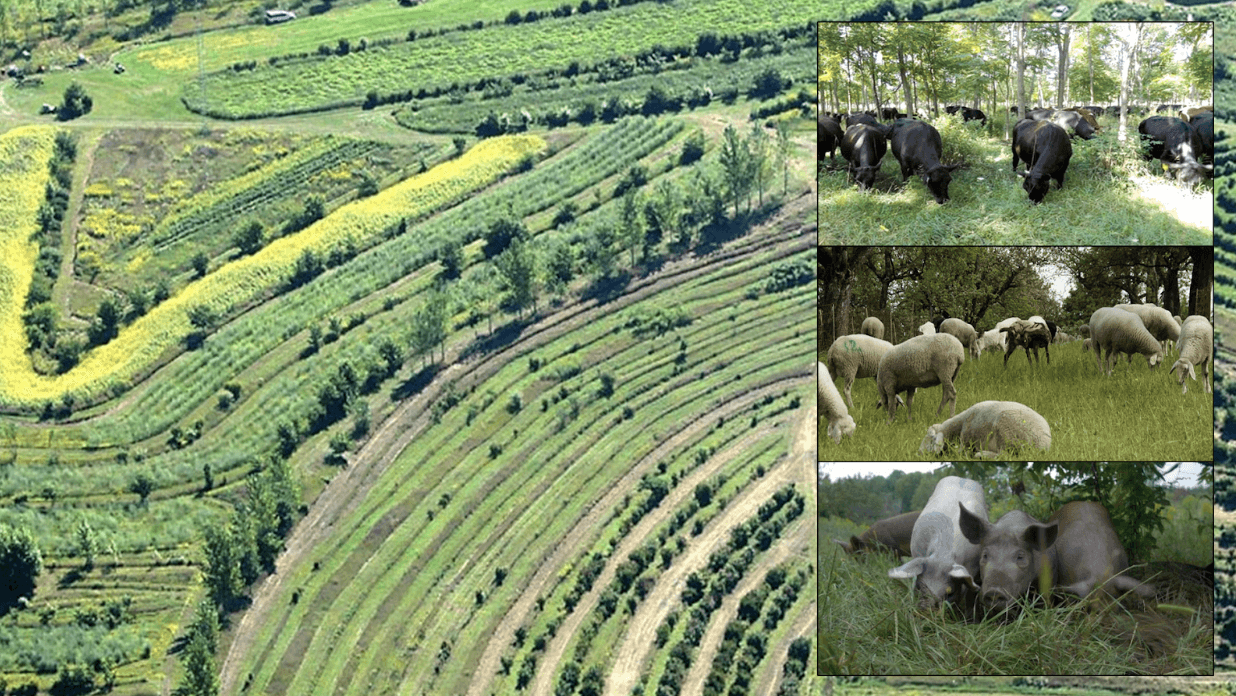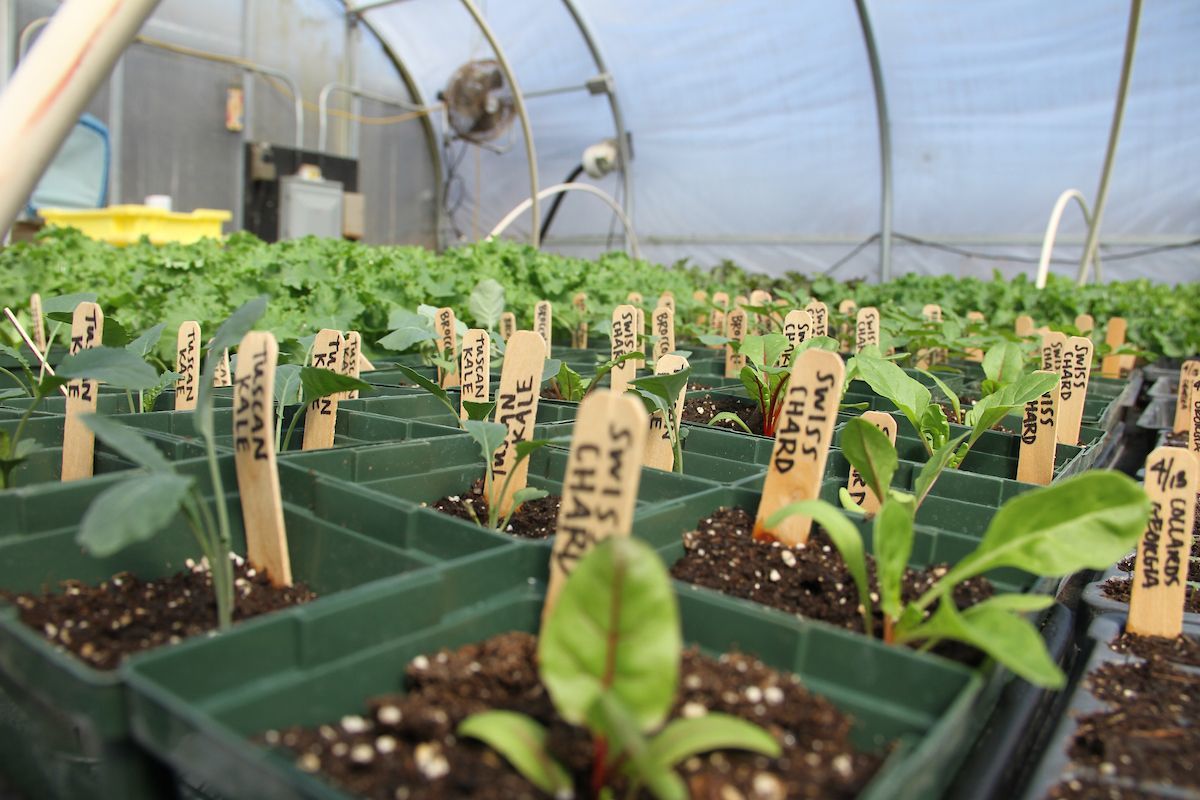
Alley cropping and silvopasture bring trees into croplands and crops and livestock into farm woodlands to enhance biodiversity, sequester high amounts of carbon above and below ground, reduce climate risk and cultivate the resilience of farm and community. Background image credit New Forest Farm, inset images credit USDA.
The music of the rushing streams that knit together the rocky soils and rolling hills of Glynwood Farm is a daily reminder that I live and work in a landscape shaped by water. Essential to the health of land, people and community, water is a powerful force of nature that has grown more damaging with the increase in weather variability and extremes in a changing climate.
Farmers and ranchers in the Hudson Valley and beyond tell stories about the challenges of managing water—too much and not enough—in these times. Although variable weather has always been a part of farming, the growing frequency and intensity of flooding rains, dry periods and drought is something entirely new. And it’s not just agricultural businesses grappling with these climate change impacts. Unprecedented weather is creating new challenges in every part of our country.
During my short time here, I’ve witnessed the damaging effects of more frequent and intense heavy rains at Glynwood’s Farm. We already use many of the sustainable agriculture practices that are proven to reduce climate risk to agricultural operations, like diversified vegetable production, compost and cover crops, pasture-based livestock production, and intensive grazing. The increasing and recurring damage caused by heavy rainfalls on the farm tells me that we need to do more.
One solution Glynwood’s Land Management team is exploring is agroforestry. This refers to the practice of bringing trees into croplands and crops and livestock into farm woodlands. Agroforestry practices offer many benefits to our farm. Adding trees to our croplands and pastures can reduce the risk of damaging runoff during heavy rains while also moderating other weather extremes by providing shade and windbreaks.
Some species of trees and shrubs–chestnuts, black locust, poplar and willow, for example—can produce livestock feed and forage as well as new fruit and nut products to take to market. As an added benefit, agroforestry is one of the very best ways to soak up carbon from the atmosphere and store it on the farm both above and below ground.
Silvopasture, alley cropping, and riparian buffers are three different kinds of agroforestry practices that we are thinking about adopting at Glynwood Farm.
- Contemporary silvopasture integrates trees, shrubs, grassland and forage plant species with livestock, including cattle, sheep and goats, pigs and poultry to create climate- resilient landscapes that produce a mix of livestock products, such as meat, milk and fiber, along with fruits, nuts and wood products.
- Alley cropping is the planting of rows of trees and shrubs to create wide alleys suitable for the production of vegetables, grains and hay. Although alley cropping practices in the U.S. typically focus on pecan, chestnut and black walnut production in the Midwest, there are many other potential tree, shrub and crop combinations.
- Riparian buffers are vegetated areas along rivers and streams that shade and protect the streambank from damage during heavy rains and flooding. These areas can be managed to produce marketable crops, provide a critical habitat for wildlife and serve as a refuge for livestock during prolonged periods of drought and heatwave.
Over the next year, Glynwood’s land management team will be working with the Lenape Center, Interlace Commons and Propagate Ventures to identify the best locations on our farm for each of these practices; select tree and shrub species that are well-adapted to our landscape; and develop a planting and management plan that supports progress towards our Holistic Goal. We are excited to dig into the practical challenges and opportunities of agroforestry to enhance the climate resilience of our farm and reap the benefits of one of the most powerful climate change solutions in agriculture.

